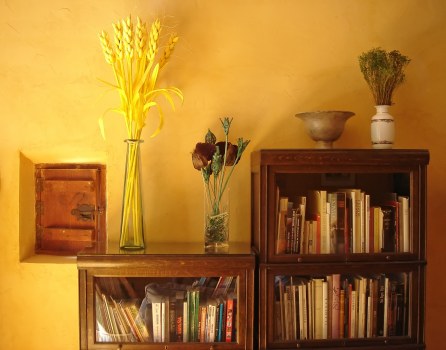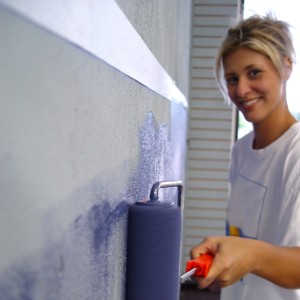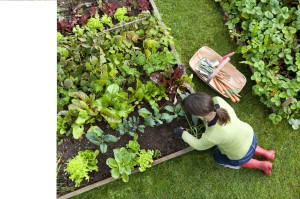
By Maria Paulia Belgado
Moving during the winter is a unique moving situation. You have the weather to deal with but there is also the holiday season and decorating as well as the unpacking your moving boxes! One item to decorate is a Christmas tree. Before you decorate you will have to choose a special one to bring home.
Choosing a Christmas tree is very exciting, especially for those little ones who are awaiting Santa! Many people have certain ideas for what a good Christmas tree should look like – healthy and lots of branches for those decorations. However, what else should you look for? Check out these tips to help you pick a winner!
Variety really depends on your where you’re located. On the West Coast, you’ll see a lot of Fraser Firs and Monterey Pines, while if you’re sourcing your tree on the East Coast, you’ll have a choice of Cedar Red, Virginia Pine, Sand Pine, Leyland Cypress and Spruce. It’s a good idea to choose a tree with shorter needles, as it will be easier to hang your decorations.
Perhaps more importantly, what you need to consider is size and height. Figure out where you want to place your tree and measure the height and width of the space. Of course, make sure you make space for the base and any toppers. Take a tape measure with you just to make sure. When choosing a place, make sure it’s away from heat sources (like fireplaces or vents) or away from traffic, as too much movement will shake off the needles.
Once you get to the tree farm or wherever you get your Christmas tree, make sure you give your choices a thorough examination.
Make sure its fresh. Are you cutting fresh or choosing from pre-cut trees? If you cut your own, then you can be sure of the freshness. If you’re buying from a lot of pre-cut trees, make sure you check the needles. They should be strong – take a handful and gently tug on the branch. The needles should stay on the branch and not fall off. Try to pull a branch down to the ground to check if the needles stay on the branch. Usually, a couple should fall off, but not too many. Give it a good smell – it should have a fresh fragrance and have a good dark green color.
Consider the decor. You should be able to hang your decorations, so the branches should be strong and have spaces for you to place them in. Take one of two decorations with you when you go tree shopping. You can try them out and see if they look good or if the tree will be able to hold them.
Hopefully, you’ve brought a car or van that can fit your tree (you’ll be surprised at how many people forget the fact that they have to bring it home!). You can ask the tree farm if they deliver as well. Once you get it home, set it up, keep it fresh by keeping it watered and you can enjoy trimming the tree with your family.
Have your area setup. You should have a tree stand with some fresh water ready. It should be steady so it doesn’t tip over. Help young kids if they want to decorate – you don’t want then to hurt themselves on the needles or accidentally knock the tree over. When you’re done, you can enjoy how the tree looks and smells!

By Maria Paulia Belgado
In the last few years, people have been concerned about the state of the environment – from global warming, to deforestation and saving endangered species, it seems every has “green” on their mind. So many things have “gone green,” from business practices, to the moving industry to fashion and even home decorating. Our homes are the best place to start if we want to be environmentally-friendly (as well as teaching our kids to be.) Of course, it’s not just about being chic and in-style, but you may find that keeping toxic materials and chemicals out of your home can do a lot more for your health. With these bedroom decorating tips, you’ll find that it can be easy to be green.
Clear the Air, Save Some Cash.
The quality of air in your bedroom is important; after all, you breathe it in and out for at least 8 hours per day. You can install from filters and air purifiers, but you don’t need to spend that much. One great way to clear the air is to install fans in your bedroom. These will not only save on your power bill, but also ensure that your air keeps flowing and doesn’t get stagnant. Also, get some lighter curtains that can allow the sun to stream in – sunshine is the best bacteria killer and will also prevent molds and mildew from accumulating in dark, damp bedrooms.
Green Your Bed.
The mattress is the most important part of your bedroom – make sure it’s not harming you and the environment. Many conventional mattresses contain toxic chemicals and contains polyurethane foam which is bad for the environment. Instead, choose organic mattresses, usually made of wool, cotton or latex which are all farmed organically. These are durable materials and provide the same comfort as regular mattresses, so there’s no need to sacrifice quality for eco-friendliness.
Don’t Forget Your Bedding.
Next, you can get some organic beddings, as well. Organic cloth made from cotton or bamboo are the best, as these are not treated with formaldehyde to make them soft. Cotton plantations use about a third of the world’s pesticides, so buying organic cotton, made without any chemicals will make a big difference. Bamboo, on the other hand, is a fast-growing, renewable resource. Of course, when you decide to go green and replace your old bedding, make sure you recycle them, whether that means turning them into something useful like pillow covers or rags, or donating them to a shelter.

Follow our tips to brighten up and decorate your small space
With small apartments or homes, decorating your small space can be a challenge. Since your home is a reflection of your personality you want it to be warm and open showcasing your interests in music, art and culture.
Keep it natural. For small spaces, you will need maximum openings to help with natural light. Make sure your blinds and curtains do not block any artificial and natural sources of light; doing so will make your room look dry and cramped. Avoid using heavy and dark window curtain as they reduce the visual area of your room. Make sure you use clear or light colored glasses for your windows. Arrange your furniture such that it doesn’t block light. Sparkling clean windows will add more volume to your room.
Huge and block-like furniture pieces will your small rooms look even smaller. Try placing light and informal furniture pieces that make your small room stylish. Do not place your chairs or sofas in front of your windows. Placing furniture in front of your windows reduce the length of your small spaces. Low profile furniture pieces are best suited for small spaces. Make sure you add furniture which is comfortable and keeps free space in your room.
Monochromatic color schemes are best suited for small spaces. This means you should use different shades of the same color. This trick works best when you use a neutral color, like white, along with it. Using variations of a single shade make small spaces look larger, open and not cluttered. You may also consider adding exciting textures.
Even of your space is small, it should be converted such that it has enough place for everyone. There is potential in all small spaces to be converted into stylish areas. Even if your space is small, there are corners which can be used effectively. Add reading lamps or slender hall lamps to brighten up those corners. You can easily give volume to your small space by highlighting your dark corners. Setting slim and tall hall lamps will also throw light to your ceiling and make the entire room glow.
Keep your floor area clear. Using up floor space will reduce the area of your room. Adding shelves and wall racks will make your small space attractive and also provide better storage options. There are several kinds of materials which can used to create decorative shelves.
Your space should also be free of clutter. A cluttered space feels not only disorganized, but cramped as well. If you want to project more volume in your small spaces, art and accents should be sparingly used. Adding few favorite accents will do the needful. You may also shuffle your accessories to change the look of your small spaces. While adding paintings, make sure you add the ones which are rectangular and sleek. Don’t cover all your walls with paintings; there must be enough space between two paintings, and it will make it look less cluttered.
Decorating your small space doesn’t have to be difficult. Using a little creativity and imagination can transform your small spaces into livable and wonderful areas.

By Maria Paulia Belgado
Special to Relocation.com
The holidays are upon us again, and first up is the frighteningly delightful celebration of all things ghoulish – Halloween! It’s that time of year when the young (and young at heart) dress up in celebration of All Hallow’s Eve. Dressing up isn’t just for your kids – you can dress up your home as well, to welcome trick-or-treaters or guests for a Halloween Party. To help you along, here are some Halloween home decorating ideas to give your home a festive new look.
Idea #1 Scary Carved Pumpkins:
Pumpkin carving is a Halloween tradition, and is a great activity for kids (though the young ones should be supervised!) If you’ve never done it before, it’s easy to make your own Jack-O-Lantern. Take a fresh pumpkin – the bigger the better – in a shape you like. Draw a circle on the top, around the stem, and cut carefully. Take the top off and set it aside. Scoop out the insides and throw it out. Now, draw a scary face on the side of the pumpkin, and carefully cut it out it a small knife. When you’re done, place a small votive candle inside and put the top back on. And there you have – a pumpkin carving worthy of Halloween! Do this with several pumpkins and place it along your porch or front yard to greet your guests.
Idea #2 Spooky Scarecrow:
A scarecrow isn’t just for the birds – but it can be fun for Halloween too. First, carve an extra pumpkin (same instructions as above) and set it aside. Take some old clothes, like a shirt and pants or overalls, and stuff it with straw. Sew the top and bottom together to make the scarecrow body, and cut out a hole between the legs. Then, drive a large stake to the ground, and push your scarecrow body through the stake, leaving some room on the top. Secure it with some twine if you need to. Now, take your carved pumpkin, cut a hole in the bottom for the stake, and place it on top of the body. Top it off with a straw hat and there you go – a spooky scarecrow to frighten (and delight) those trick-or-treaters!
Idea #3 Holiday Wreath:
Not all Halloween decorations need to be scary. Halloween is also when fall is in full swing – when the leaves turn brown and fall to the ground and crunch beneath our boots. Celebrate this time of the year with a holiday wreath. It’s really easy to make, if you have the right materials. You’ll need a circular frame of some kind, and you can cut one out of Styrofoam or you can use an embroidery hoop. Using crafter’s glue or a hot glue gun, you can attach all kinds of fall-related items to the hoop. It’s good to have a base material of some kind, and usually, brown twigs are a great base. Just take the twigs and glue it to the frame, in the same direction. Then you can attach all kinds of things to it – pine cones, leaves, miniature pumpkins, small ears of corn, etc. Or if you want to keep with the spooky Halloween theme, then you can use plastic spiders, vats, skulls or mini Jack-O-Lanterns.
These are just some of the basic home decorating ideas for Halloween you can do to prepare your home for this fun and frightening holiday. Be creative and try your own decorating ideas – there are no rules and remember it’s all for fun!

Recycling is a great way to start with your budget home designs.
By Maria Paulia Belgado
Special to Relocation.com
When decorating your home, have you thought about the impact your decisions make on the environment? These days ‘going green’ usually means paying a premium, just to save the environment. Organic food, biodegradable packaging, eco-resorts – all these things cost at least 25 percent more than their regular counterparts. However, no one said this was a rule – in fact, doesn’t it seem silly in a way, that to be environmentally friendly has to cost more?
But, you don’t have to spend a lot just to save Mother Earth. In fact, you can still be eco-chic, without breaking the bank, with these green design ideas:
First things first – recycle!
Don’t just throw out everything you own. See if there’s anything at all you already have that can be reused in any way. Maybe all you need to spruce up your living room is some new pillows. You can sew new pillow covers using fabrics you have lying around the house. How about those pretty curtains you’ve never put up or maybe some pretty scarves which have gone out of fashion. Before you go to the store and reach for your wallet, look around the house first.
Also, you don’t have to buy everything 100 percent brand new. Go to thrift shops, the Salvation Army or garage stores and turn someone else’s junk into your treasure. You’ll never know what fun and unique items you’ll find, at cheap prices too!
Repaint.
One of the cheapest ways to really change up a room is with a coat of paint. Choose eco-friendly, non-toxic paint with low or no VOC (volatile organic compounds). These might end up costing a little bit more, but instead of calling an expensive painting company do it yourself! This way, you can save money and you can reduce your carbon footprint since you don’t have to ask someone to come in and drive to your home.
Make your own décor.
Why pay a lot for artwork for your walls, when you can make it yourself? Have your own photos done at your local printshop and frame it, so you can hang it on your empty walls. Or why not assemble some old jars and bottles, fill them will pretty stones or seeds and use that as an accent or centerpiece? Eucalyptus leaves last for a very long time and can be used to decorate your bathroom, as well as give you some natural aromatherapy. Cut some stems and wrap them at the end with some recycle ribbon or string. Hang it upside down your shower curtain rod to bring some real green into your bathroom.
Think small.
There’s no need to replace your entire kitchen or living room and spend a fortune just to be eco-friendly. Replace your light bulbs with more energy-efficient ones. Or why not get some inexpensive heat-inductive cookware – these make sure your food is heated up evenly, and therefore you use up less energy to cook. Instead of using harmful chemicals to clean your countertops, use some good ol’ vinegar and water.
There’s no need to blow your budget, especially in today’s tough economic times, just to go green. By thinking creatively, you can save a lot of money, have an eco-chic home and help save the planet.
Don’t forget to like us on Facebook and follow us on Twitter!
• Follow us on Twitter @Relocation_News
• Become a fan of Relocation.com on Facebook

A new coat of paint can really spruce up your home.
By Kathy Woodard
Now that moving is over and you’re finally in your new home, it’s time to make it your own and add some of your style and personality. There are some simple home improvement fixes to change your new home that anyone can do. With one weekend and a little elbow grease, you can have your place in tip top shape in no time!
Paint:
Ok, I know this is an obvious one. The reason you hear painting as the number one DIY project for new homeowners so often is because it’s effective. And cheap. And easy. What more could you want? Make sure you plan out your color scheme for each room or the whole house before you ever visit a paint store. Many a new homeowner has ended up with what in the store appeared to be a bold, trendy color, only to discover that their new home was pink — really pink. Consider not just walls, but kitchen and bathroom cabinets, trim and doors as well. Plan, prepare and try out sample paints before you take a whole project on, but do paint!
Paint more…
Yea, I know, back to the paint thing. But did you know you can paint more than walls? By using a good primer and some polyurethane for protection, just about anything can be painted. Some ideas?
• Ugly bathroom countertops? If you can’t afford replacement counters, no worries. Prime, paint with a faux stone finish, then seal with polyurethane. Instant style update, without the remodeling price!
• Does your new kitchen come complete with avocado green appliances? You can spray paint them with auto spray paint to camouflage the 1970s look. If you paint a stove, make sure you use stove paint to protect the finish from the heat. Most home improvement stores carry a good brand.
• Yucky pink tile in the bathroom? Again, prime with a good primer, then paint. There are specialty paints for just this purpose, or you can use regular house paint and seal well with polyurethane.
• Even vinyl flooring can be painted. Keep in mind however, the higher the amount of traffic the floor receives, the more coats of polyurethane you will want to use for protection.
Add curb appeal:
You can increase the curb appeal of your new home in a day with some simple fixes. Replace your house numbers with something more in line with your personal style. Add a new mailbox, and update the light fixtures on your porch. Consider adding a window box or two. Use ornamental grasses in your box to give your home a contemporary feel different from the other houses on the block. Finally, paint the front door. Making these easy changes will brand your house as yours from all the way down the street!
Add storage:
Most homes never have enough storage, so think about making that one of your first home improvement projects. Closet and pantry systems are available at most home improvement centers and are easily installed by a beginning DIYer. Don’t forget the garage! Even adding simple shelves, hooks and hangars for tools and other items can double your storage space.
Quick changes:
There are also some simple projects you can do in less than an hour. Change out the cabinet hardware in the kitchen and bath. Choose new glass shades for all your ceiling mount light fixtures. Replace mismatched window treatments with inexpensive blinds. Add curtain sheers. Clean your windows inside and out to add sparkle to every room!
There you have it, simple fixes to change your new home, without needing a class in engineering or the bank account of a celebrity!
Want free home and garden ideas? Kathy Woodard is an author, columnist and home decorating expert. Visit her websites: TheBudgetDecorator.com and DecoratingYourSmallSpace.com.
More articles for your home improvement plans:
June 14th, 2010 by
Admin
Categories:
design and decorate,
Do It Yourself,
exterior projects,
Home Improvement,
Moving,
Moving Scams,
Packing,
Plan Your Move,
Plan Your Relocation,
Relocation,
Relocation Data,
Saving Money Comments:
No Comments »

Start small and your garden will grow
By Kathy Woodard
Whether you are moving to a new home or have lived in your residence for a long time, there are certain home improvement projects that can spruce up your landscape and add value to your property, while also being an enjoyable activity for you and your family. As the top hobby in the country and a fun home improvement project, gardening beautifies your property, relieves stress, offers good exercise and even supplies you with fresh herbs for your dinner. Not to mention, it allows you the opportunity to commune with nature in your own backyard! Not knowing how to garden can stop many people from picking up that first trowel or planting that gorgeous rose they have long admired. No need to fear those hydrangeas, beginners can easily learn how to garden by following these simple tips.
Learn, learn, learn.
There are so many resources now for learning about gardening. Libraries and book stores overflow with gardening books and the internet has a wealth of information. Consider joining a local gardening club or online forum. Start a notebook where you can keep magazine pages of yards or plants you’ve admired, notes from online searches, or snapshots of your yard, both before you start gardening and as you progress.
Don’t bite off more than you can chew.
The biggest mistake beginner gardeners make is to start with too large a garden, or to use plants that require an expert’s care. You can always add more to your garden as you gain experience; nothing is as off putting to a newbie as a huge garden that turns, practically overnight, from gorgeous blooms to overrun weeds. Talk about taking the bloom off the rose! It’s common to quit gardening after a bad experience, so don’t let this mistake choose for you. Start small. Start simple.
Plan… but be flexible.
Make sure you spend some time drawing out a plan for your new garden. Make lists of plants that you would like to try, and research what times of year they bloom or fruit and what their special needs are. Group plants with similar needs together. Make sure shade plants are planted in shade, and sun plants in the sun. All that have been said don’t be afraid to try something new. Sometimes a volunteer plant will pop up and look just gorgeous right where it is. Other times you will have chosen a certain plant for a site and find that even after all your preparation, it doesn’t do well there. So, move it! Head to the nursery with a list, but don’t be afraid to substitute a plant for a new find. (Be careful with this one, you may come home with twice the plants you need!) Also, make sure that you purchase the proper gardening tools and don’t be afraid to ask for help!
Find a passion within your garden.
Once you learn a bit about how to garden, most beginners find a niche in gardening that ignites their passion. Find it, and enjoy it. Wildlife gardening, growing your own food, growing flowers for your own arrangements or water gardens complete with koi and living water plants are common passions. Letting yourself find that connection with the outdoors that speaks to you will only enhance your love of gardening all the more.
Consider hiring help.
If you love the idea of having a garden, or have gotten in a little over your head, hiring a gardener can be the perfect solution.
• Decide what kind of help you need. Do you need just regular mowing and fertilizing, while you take care of the flower beds? Do you want your gardener to do it all? Are you somewhere in between? Knowing what you need and what you can afford is the first step.
• Ask for reference from family and friends.
• Choose a garden service you can communicate with well. The last thing you want is for your new “help” to cut down the prize hydrangea you have been growing all season, or to use pesticides on your organic vegetables.
Learning how to garden is a fun and healthy hobby for beginners. Just follow these tips to get turn all your fingers into “green thumbs”!
Want free home and garden ideas? Kathy Woodard is an author, columnist and home decorating expert. To read more articles by Kathy, visit The Budget Decorator and The Garden Glove.